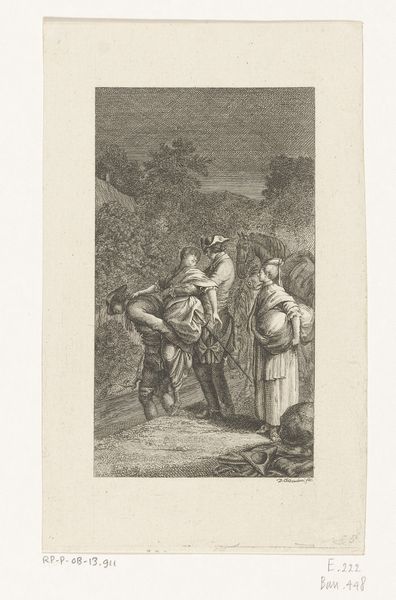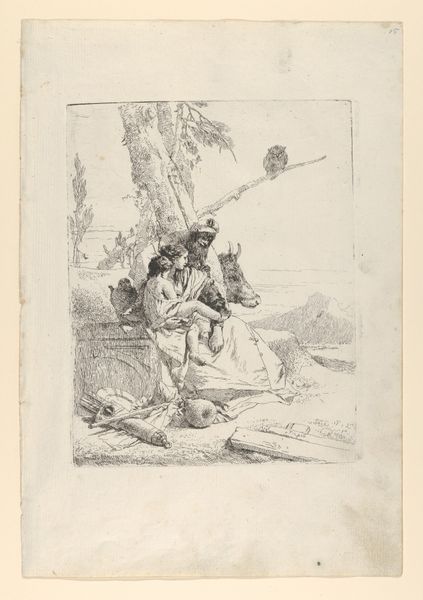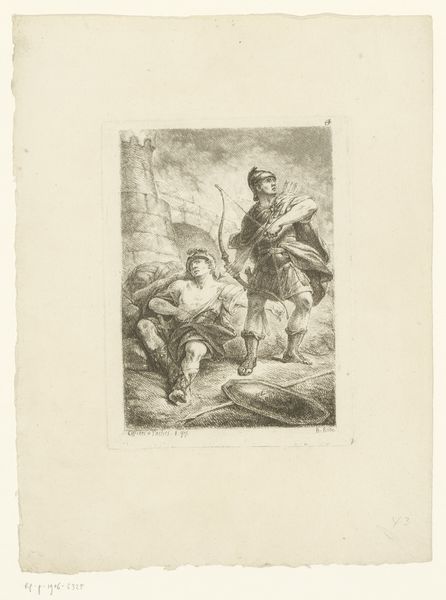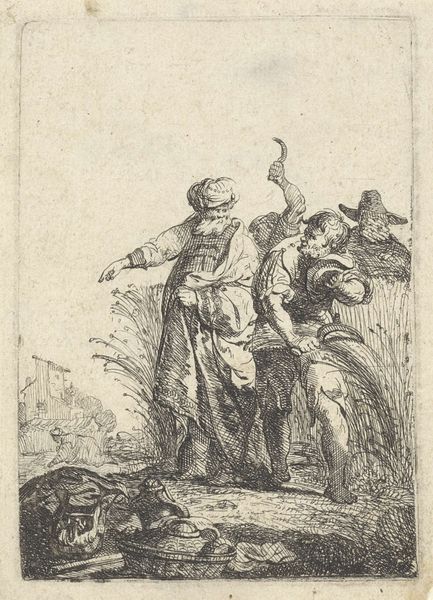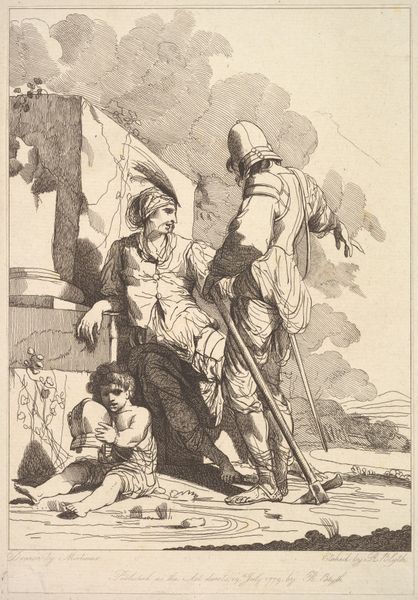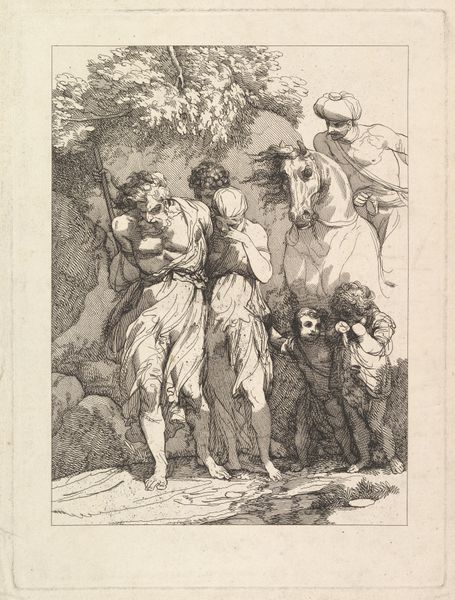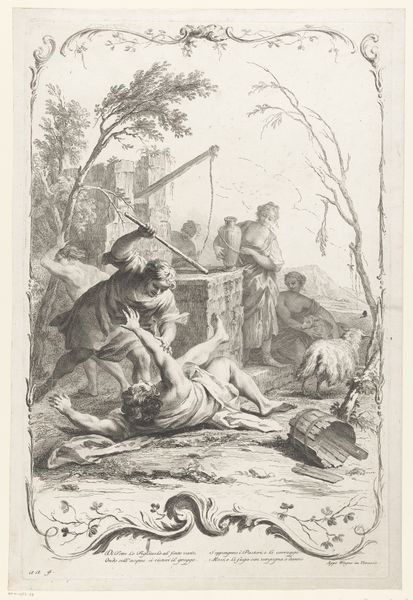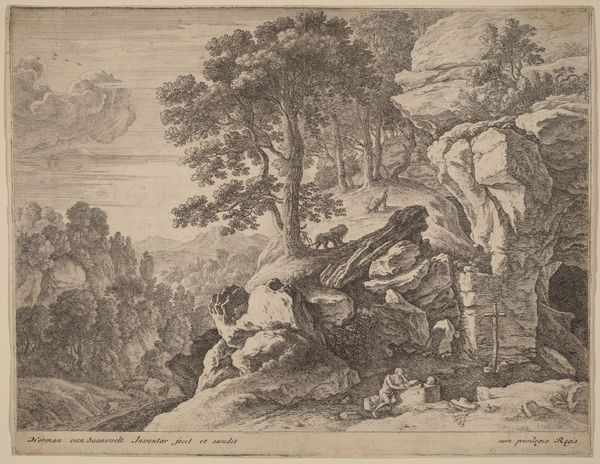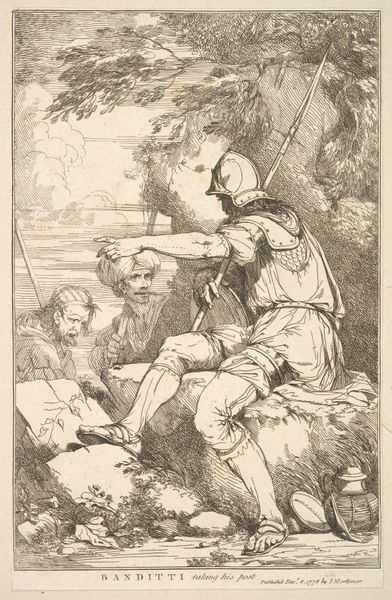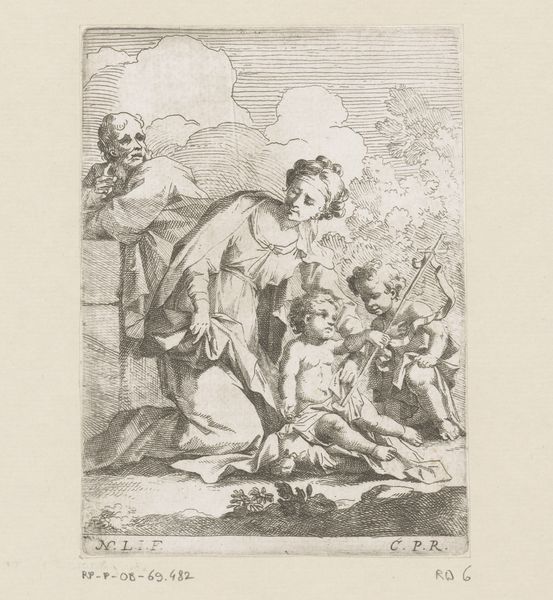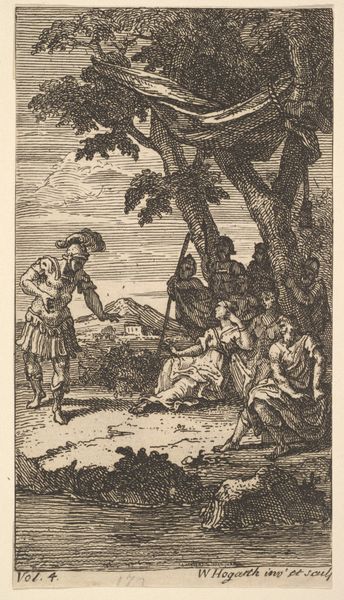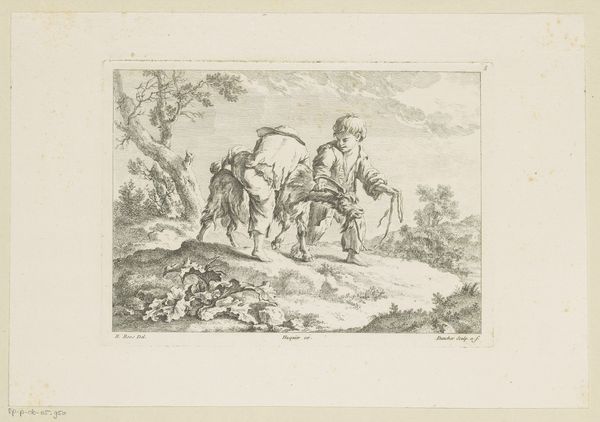
Dimensions: sheet: 12 x 8 7/16 in. (30.5 x 21.5 cm)
Copyright: Public Domain
Curator: Salvator Rosa’s print, entitled “Soldiers”, dating back to 1766-1767. It's currently housed here at the Metropolitan Museum of Art. Editor: My first thought is of contrasts; the refined, almost delicate etching style, set against the rather brutal subject matter of soldiers, perhaps scheming or even threatening someone. Curator: Absolutely. Rosa, who was well-known for his history paintings, uses engraving techniques here that almost elevate this scene of soldiery, transforming rough figures into detailed subjects for fine art prints. Editor: It makes you consider the socio-political backdrop against which these prints were produced. Were they meant as commentary on the state of warfare, or did their value reside more in simply documenting Rosa's paintings to be made accessible to the broader public? Curator: I suspect it's a bit of both. There's a long tradition of depicting military exploits, valor, and nobility and Rosa places his composition firmly within this genre, yet he subverts conventional military themes, showing soldiers away from the battlefield—perhaps questioning, even challenging military authority and societal valorization of warfare. Editor: Note, too, the scale and format of the print, intended to circulate within specific social and economic strata. These weren't mass-produced images, they were expensive artifacts intended for an elite clientele of collectors. Curator: Indeed, access played a significant role. What’s striking is the tension created between the supposed ‘original picture’ which can be viewed in person and these reproductive engravings to be consumed more widely, but exclusively. And this collection belonged to the Earl of Orford...it's clearly artwork as a status symbol. Editor: Ultimately, the physical artifact of the engraving—the paper, the ink, the lines—speaks to the craftsmanship but also of cultural and financial resources involved in circulating visual representation. Curator: It prompts consideration as to who owned them, how were they shared, and what ideas circulated because of their display in private collections like that of the Earl of Orford. Editor: Exactly. It all enriches our perception and makes Rosa’s "Soldiers" so relevant today.
Comments
No comments
Be the first to comment and join the conversation on the ultimate creative platform.

